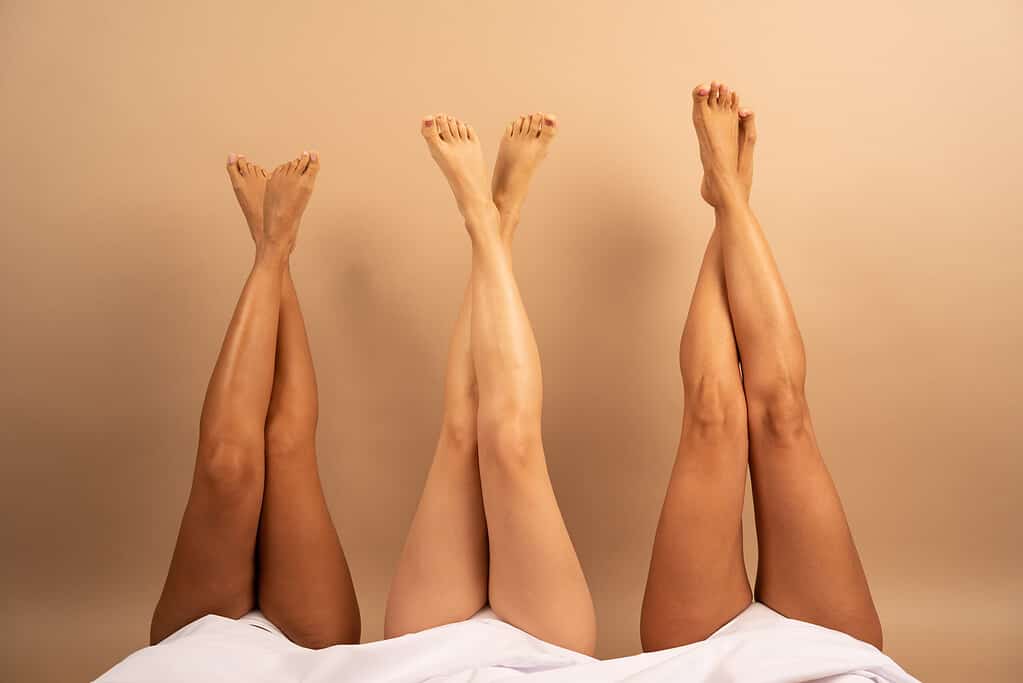Labiaplasty
Tighten and shape the vaginal area
Increase sexual well-being
Look younger and fresher
Request now
Labiaplasty
There are various reasons why people decide to have a labia reduction. One possible reason can be that the too large labia minora cause pain due to unpleasant friction during sports.
In addition, there may of course also be aesthetic reasons why one decides to have a labia reduction.
Why book through us?
- Experience and expertise: The team of doctors at the respective clinic has many years of experience in the field of labia reduction and is always up to date with the latest medical developments.
- Individual consultation: We take the time to understand your wishes and goals and your personally selected clinic develops a tailor-made treatment plan for you.
- Safety first: Your health and safety come first. The clinics operate in a modern, hygienic environment and follow strict medical standards of the respective country.
- Natural aesthetics: Labia reduction is carefully performed by the attending doctor to achieve a natural result.
Your path to your desired procedure - The treatment process
- Personal consultation: In a consultation we will discuss all your wishes and inform you in detail about the entire procedure before the labia reduction.
- Individual treatment plan: The on-site medical team develops a customised treatment plan that takes into account your physical characteristics and personal expectations.
- Treatment: Using the most modern techniques, the doctors perform labia reduction to achieve an aesthetically pleasing and natural result.
- Aftercare and support: Even after the treatment, we , as mediators, and the medical team of the respective clinic are available for professional aftercare to ensure a smooth healing process.
Contact us today! Our team is available to answer all your questions and explain the process in detail.
Price
Aftercare in Germany
Medassure Beauty covers the follow-up costs for you.
What are the advantages of follow-up cost insurance with Medassure?




FAQ
When should you reduce the labia minora?
Labiaplasty can be considered in the following situations:
1. physical discomfort: If you suffer from pain, friction or discomfort, especially when exercising, wearing tight clothing or during sexual intercourse.
2. psychological discomfort: if you feel uncomfortable because of the size or shape of your labia or your self-confidence is affected.
3. physical changes: After pregnancies or weight changes that have affected the shape or size of the labia.
It is important to speak to a specialist to discuss your concerns and plan the best course of action.
When is the labia too large?
There is no fixed definition of when labia are 'too large' as this depends heavily on individual perceptions and cultural standards. Many women perceive their labia as 'too large' when they experience physical discomfort such as pain, friction or discomfort when wearing tight clothing or during sexual intercourse. This can also be a reason to consider a reduction if personal self-confidence and body image are affected. Ultimately, it is important that every woman feels comfortable in her own body and discusses her concerns with a specialist.
How does labia reduction surgery work?
A labia reduction usually proceeds as follows:
1st consultation: The first step is a detailed consultation with a specialist who will listen to your concerns, review your medical history and discuss the best options.
2. anaesthesia: On the day of the procedure, anaesthesia is administered, either locally or, in some cases, under general anaesthesia, depending on the complexity of the procedure and the patient's wishes.
3rd procedure: The surgeon removes excess tissue from the labia in order to achieve the desired shape and size. This can vary depending on the technique, but precise incisions are often made to promote healing with as little scarring as possible.
4. aftercare: After the procedure, you will receive instructions on wound care and how to avoid activities that could impair the healing process.
The entire procedure usually takes about 1 to 2 hours, and most women can usually go home the same day.
Can one labia be larger than the other?
Yes, it is quite normal for one labia to be larger than the other. Asymmetry is common in most women and can vary in size, shape and thickness. As long as there are no physical complaints or health problems, this is not usually a cause for concern. However, if the asymmetry is perceived as bothersome or causes discomfort, a consultation with a specialist may be useful to discuss possible options.
How quickly can I get an appointment for a labia reduction?
Our clinics are flexible and endeavour to make appointments for labiaplasty at your convenience. You can usually get an appointment within 3 weeks. This allows you to plan and realise your treatment promptly.
How long should I not sit after labiaplasty?
After labiaplasty, you should refrain from sitting directly on hard surfaces for about 1 to 2 weeks. It is important to avoid putting pressure on the treated area so as not to impair healing. It is usually advisable to use soft cushions or special seating aids to increase comfort during this time.
When can I shave after labiaplasty?
After a labiaplasty, you should generally refrain from shaving the affected area for around 2 to 4 weeks. This gives the skin enough time to heal and minimises the risk of irritation or infection. It is important to follow your doctor's precise instructions and only start shaving when you are sure that the wounds have healed well.
How long does pain last after labiaplasty?
After labiaplasty, pain and discomfort can usually last from a few days to a week. The intensity of the pain varies from person to person, but can usually be well controlled with painkillers. In the first few days after the procedure, you may also experience a feeling of pressure or pulling in the labia area, which will improve over time as healing progresses.
What can be done during a labiaplasty?
In a labiaplasty, various procedures can be performed to optimise the shape and size of the labia. These include
1. reduction of the labia: Excessive tissue can be removed to aesthetically harmonise the labia and alleviate discomfort.
2. shaping and contouring: The shape of the labia can be adjusted to achieve a more even and attractive appearance.
3. correct asymmetry: If the labia are uneven, the surgeon can make specific adjustments to achieve better symmetry.
4. fat injection: In some cases, fatty tissue can also be injected to increase the volume of the labia or improve their shape.
5. skin tightening: If necessary, the skin in the labia area can be tightened to achieve a smoother appearance.
It is important to have a detailed consultation with a specialist before the procedure to discuss your wishes and options.
How long does it take for the stitches to dissolve after a labiaplasty?
The sutures after a labiaplasty are usually self-dissolving and begin to dissolve after about 1 to 2 weeks. However, complete healing can take several weeks, depending on your individual healing process. It is important to follow your doctor's instructions for wound care and to consult your doctor if you have any questions or concerns during the healing process.
What should I bear in mind after labiaplasty?
After labiaplasty, it is important to keep the wound clean and dry and to follow your doctor's instructions for wound care. Mild pain and swelling are normal and you can take painkillers if necessary. Avoid sitting directly on the treated area and refrain from strenuous activity and sexual intercourse for a few weeks. Watch out for signs of infection, such as redness or pus, and contact your doctor immediately if you have any concerns.
When should labiaplasty not be performed?
Labiaplasty should not be performed if you are planning to become pregnant, as pregnancy can have a negative impact on the results. It is also advisable to postpone the procedure until any existing infections in the genital area have healed. People with certain health problems, such as diabetes or wound healing disorders, should definitely speak to their doctor beforehand.
When can you have sexual intercourse again after labiaplasty?
After labiaplasty, sexual intercourse should generally be avoided for around 4 to 6 weeks. This gives the tissue sufficient time to heal and minimises the risk of complications or irritation. It is important to follow your doctor's instructions and only become active again when you feel fully recovered. If you are unsure or have any questions, it is advisable to speak to your doctor directly.